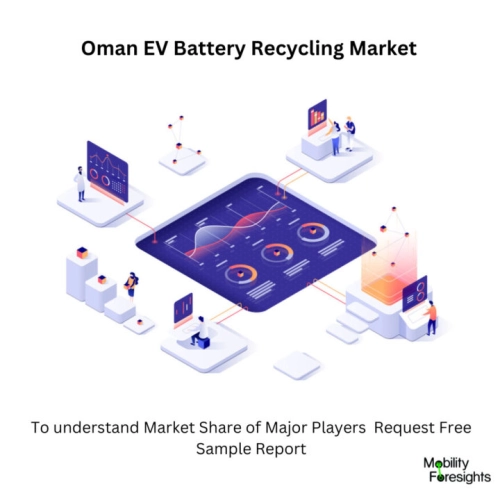
- Get in Touch with Us

Last Updated: Apr 25, 2025 | Study Period: 2024-2030
EVs are frequently associated with their environmental friendliness and sustainability. The fact that electric vehicles emit far fewer pollution than fossil fuel-powered automobiles and vehicles is likely one of the main factors contributing to their general popularity in India (and around the world).
However, detractors frequently point out that the benefits of reduced emissions are frequently exaggerated while issues with battery management are neglected.However, there are a number of benefits, chances, and difficulties that could contribute to the success of the nation's EV battery recycling system.
Costs associated with raw materials account for a good percentage of the entire cost of making an EV battery. A thorough program on EV battery recycling, however, may greatly lower such expenses. So let's consider the potential and difficulties encountered.
The lithium-ion battery (LIB) is currently the best alternative among the several battery technologies that are now in use. Although there are several LIB batteries, lithium, nickel, manganese, and cobalt (LNMC) and lithium iron phosphate (LFP) batteries are used in the majority of electric vehicles.
These batteries have an eight to ten-year shelf life, but once their ability to produce energy drops below 80%, they are no longer appropriate for use in electric vehicles. On the other hand, these batteries can still be used in stationary applications, including stationary applications for storing renewable energy.
The Indian government has released draft recommendations on battery waste management to prevent incorrect handling and treatment of LIBs. In accordance with these recommendations, manufacturers would be mandated to bear responsibility for the collection, storage, transportation, recycling.

The Oman EV battery recycling market accounted for $XX Billion in 2023 and is anticipated to reach $XX Billion by 2030, registering a CAGR of XX% from 2024 to 2030.
Oman Investment Authority (OIA), the integrated sovereign wealth fund of the Sultanate of Oman, is one of several strategic foreign investors that have added to their portfolio of investments in the Oman EV battery recycling. Ascend Elements is a US-based manufacturer of engineered materials and a recycler of lithium-ion batteries.
Ascend Elements, a Massachusetts-based company, disclosed that it has obtained millions in debt and equity funding, including millions in Series C equity investments from a global group of strategic and monetary investors, including OIA, a Muscat-based company.
The environmental division of South Korean conglomerate SK Group, SK ecoplant, and Fifth Wall Climate both participated in the investment round. Other recent investors include Mirae, GLY Capital Management's New Mobility Fund, and Lithium Americas Corporation.
| Sl no | Topic |
| 1 | Market Segmentation |
| 2 | Scope of the report |
| 3 | Abbreviations |
| 4 | Research Methodology |
| 5 | Executive Summary |
| 6 | Introduction |
| 7 | Insights from Industry stakeholders |
| 8 | Cost breakdown of Product by sub-components and average profit margin |
| 9 | Disruptive innovation in the Industry |
| 10 | Technology trends in the Industry |
| 11 | Consumer trends in the industry |
| 12 | Recent Production Milestones |
| 13 | Component Manufacturing in US, EU and China |
| 14 | COVID-19 impact on overall market |
| 15 | COVID-19 impact on Production of components |
| 16 | COVID-19 impact on Point of sale |
| 17 | Market Segmentation, Dynamics and Forecast by Geography, 2024-2030 |
| 18 | Market Segmentation, Dynamics and Forecast by Product Type, 2024-2030 |
| 19 | Market Segmentation, Dynamics and Forecast by Application, 2024-2030 |
| 20 | Market Segmentation, Dynamics and Forecast by End use, 2024-2030 |
| 21 | Product installation rate by OEM, 2023 |
| 22 | Incline/Decline in Average B-2-B selling price in past 5 years |
| 23 | Competition from substitute products |
| 24 | Gross margin and average profitability of suppliers |
| 25 | New product development in past 12 months |
| 26 | M&A in past 12 months |
| 27 | Growth strategy of leading players |
| 28 | Market share of vendors, 2023 |
| 29 | Company Profiles |
| 30 | Unmet needs and opportunity for new suppliers |
| 31 | Conclusion |
| 32 | Appendix |